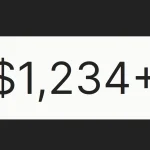| Author: | louisho5 |
|---|---|
| Views Total: | 248 views |
| Official Page: | Go to website |
| Last Update: | January 3, 2024 |
| License: | MIT |
Preview:

Description:
MotionScroll is a lightweight scroll animation library that applies high-performance scroll-triggered animations to elements using CSS properties.
Some options include setting the easing function, offsetting the trigger points, playing in reverse, and more. This makes it flexible enough to achieve a wide variety of effects.
How to use it:
1. Download and load the motionscroll.min.js script in the HTML document.
<script src="motionscroll.min.js"></script>
2. Wrap the target element into the motionscroll container and define the scroll animation using the data-motionscroll-to or data-motionscroll-animate attribute:
<div class="motionscroll">
<div data-motionscroll-to="transform: rotateY(360deg)">
Element To Scroll
</div>
</div>
<!-- OR -->
<div class="motionscroll">
<div data-motionscroll-animate="20% { opacity:0; } 40% { opacity:1; } 60% { opacity:0; } 80% { opacity:1; } 100% { opacity:0; }">
Element To Scroll
</div>
</div>3. Initialize the MotionScroll and you’re done.
new MotionScroll();
4. Apply the scroll animation to a specific container.
<div class="custom">
<div data-motionscroll-to="transform: rotateY(360deg)">
Element To Scroll
</div>
</div>new MotionScroll(".custom");
// OR
new MotionScroll({
container: ".custom",
});5. Available options to config the scroll animation.
new MotionScroll({
// apply the scroll animation to these elements...
layer: "[data-motionscroll-to],[data-motionscroll-animate]",
// easing function
ease: 'linear',
// top/bottom offset in px
offsetTop: 0,
offsetBottom: 0,
// reverse the animation
reverse: true,
// play the animation only once
playOnce: false,
// add "!important" to all MotionScroll CSS animations
override: false,
});









